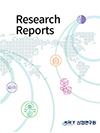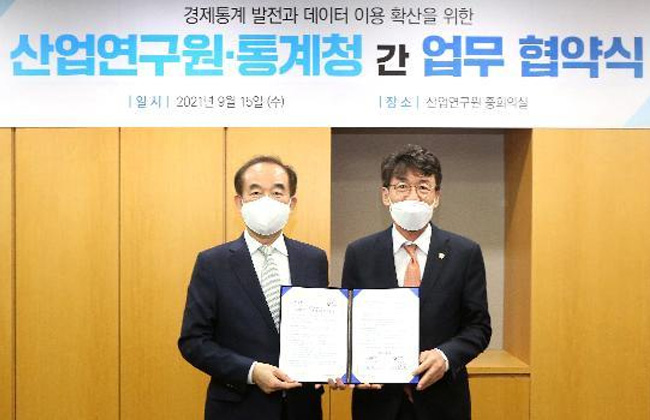Research Reports

Present research proposes efficient forwarding strategy and policy-level assignments for regional industry policy to promote innovation growth, through theoretical study and empirical analysis that are related to environmental change of the industrial economy of platform economy and current status of Korean local industries. The study operationally defined inclusive innovation growth as it includes both innovation growth and inclusive one. ‘Innovation growth’ refers to the efficient industrial economy development strategy under the representative condition of industrial development in the platform of economic environment of the 4th industrial revolution era, while ‘inclusive growth’ refers to inclusive development strategy on spatial perspective for sustainable development. Especially, the paper studied streams of theoretical research regarding recent environment of economy and related policy to illuminate the importance of industrial environment development focused on regional economy in terms of promoting inclusive innovation growth, and set forwarding strategy and basic direction of Korean regional industry policy through empirical analysis on current status of regional economy and structural changes of the regional industry. Based on these, the paper proposes some major policy-level assignments of local industry policy to apply local innovation development.
It is expected that the industrial economy environment we have faced and will face would evolve into platform economy through groundbreaking changes over the core technologies, demand market, and industrial production of the 4th industrial evolution era. It is also expected that region-focused customized production method would become dominative in platform economy, and the role of regional economy would become more important in regard to national economy growth. This is because individuals or separate regions emerges as converging unit of both production and consumption as customization of the two economic activities enters full-fledged status with the changes of core technology, industrial production, demand market, and industrial value chain with the 4th industrial revolution. In same perspective, organizations which establish international policies such as IMF, ADB, World Bank and OECD are proposing the inclusive growth as a new industrial economy development strategy. Inclusive growth refers to a political or institutional process aimed to resolve inequality among economic entities by ensuring their economic capabilities and participation in production process, and achieve balanced sharing of the reward of growth among the entities as much as their commitment. Present research seeks an efficient alternative for reform of regional industry policy in the perspective of inclusive growth. In other words, it proposes forwarding strategy and policy-level assignments in regard to ‘expansion of commitment elements’, ‘improvement of process and enhancement of inclusiveness’, and ‘diffusion of service result’.
Current regional economies in Korea show new unbalanced structure that displays inequality among metropolitan provinces and also among metropolitan cities, while the inequality between capital area and non-capital regions remains as it has been. In this context, depression of regional economic growth and aggravation of inequality are closely related to the low-growth of national economy in general.
In order to find out the cause of depression and alternatives for new growth, there is need to shed light on the discordance phenomenon between structural change and industry-innovation capabilities. First, in result of the analysis by variety of regional industry and universality index based on population scale, it can be said that the regional industry of Korea shows transition fromlinear hierarchical structure in 2000 to characterized dispersive structure in 2016. In other words, industries based on metropolitan cities and small & medium-sized cities in capital area show continuous growth(reinforced competitive advantage and decent possibilities of emergence of newly growing industries). Meanwhile, the variety(possiblities of emergence of newly growing industries) of industries based on metropolitan cities and small & medium-sized cities in non-capital area still stands, while the universality increases(weakening competitive advantage). Also, the increase of characterization of industries based on small & medium-sized cities(reinforced competitive advantage) can be observed.
With it, the analysis on regional innovation-industry capabilities shows the decreased capability and activity regarding innovation in the existing industrial development area. Spatial unbalance between industrial competence and innovation capability aggravates in both capital and non-capital area, and also in fundamental local government organizations of city · district · province unit. Especially, foothold cities with larger population and superior industrial competence need to rely upon the other region’s innovation elements in order to promote innovation growth. Meanwhile, regions with relatively small population and inferior industrial competence are showing the variety, with limitation in reinforcement of industrial characterization.
Through the result of analysis, a political implication on the positive perspective can be found in the transition of regional industry from hierarchical structure to dispersive one. Generally, a dispersive structure can be interpreted into spatial form of the platform-economic environment and possible attainment of various growth routes for local economy through region-based characterization. Also, another political implication can be found on the perspective of possible overcome of a negative factor, which is the aggravation of spatial inequality among industry-innovation competence. In order to resolve the inequality among the competence and achieve efficient usage, broadening of regional economy and dynamic activation of local industries’ network are needed. Renewal of regional industry’s policy unit and establish method of platform-based coordination system should be arranged in the process.
Accordingly, inclusive innovation growth is required in which local entities manage their major roles, and 3 fundamental directions to push the plan forward with efficiency can be set as following: First, platform-based economical maximazation of long-tail distribution is required. Second, great-sphere economy-based network industrial economy area should be established in order for overcome of spatial inequality between diversive structure and industry-innovation capability. Third, promote model of common property-based cluster is need to be reconsidered in order for diversive structure and long-tail distribution, and great sphere-based network industrial economy area to be established.
In line with those directions, region-driven local industry policy is proposed in the paper as input increase strategy, process reform strategy, and outcome diffusion strategy like following to apply inclusive innovation growth: First, ① improved relative variety through industry ATLAS : Selecting new local strategic industry, ② proposal of inclusive innovation of industrial compound area, as the input increase strategy. Second, ③ continuous discovery system for regional business model based on Entrepreneurial Discovery Process, ④ reinforcing public business foundation institute · space and combination with opened investment matching system, ⑤ proposal of EDP-based cultivation of local industry manpower as renewal strategy of business excavation process. Third, ⑥ platform-based reform of business supporting system, ⑦ modified evaluation system of local business through an adoption of non-market assessment index. Lastly, ‘establishment of smart regional innovation development plan’, ‘installation of city-province local innovation council’, ‘reform of special accounting system for balanced development’, and ‘renewal of special act for balanced development’ are required for establishment of new governance.

The works on this page are licensed for fair use under the provisions of the Korea Open Government License. See kogl.or.kr for more information.
Please enter the security text below
to prevent email collection
Please check the information of the person in charge.
연구과제 제안이 접수되었습니다.
신청이 접수되었습니다.


View Summary
코로나19 발생 이후 대부분의 고용 관심사가 항공 및 여행서비스, 음식·숙박 서비스 등 주로 서비스 업종에 집중된 상황에서 본 연구는 최근 그 중요성이 강조되고 있는 제조업의 고용변화를 살펴보았다. 분석에 따르면, 코로나19 이후 제조업 고용은 비교적 큰 충격 없이 빠르게 회복하는 모습을 보이고 있다. 제조업 고용은 서비스업에 비해 큰 충격 없이 유지되고 있고, 코로나19 직후 2020년 상반기에 약간 하락하였지만 하반기부터 회복 추세를 보이고 있으며, OECD 주요국의 제조업과 비교하여도 일본과 함께 고용 충격이 비교적 작게 나타나고 있다. 그러나 전반적으로 양호한 고용 성적에도 불구하고 제조업 내 특성 별로는 차이가 나타나는 것으로 보인다. 종사상 지위 별로 보면, 임시·일용직, 고용원이 있는 자영업자에서 고용 충격이 상대적으로 크게 나타났고, 상용직과 고용원이 없는 자영업자는 큰 충격이 없는 것으로 나타났다. 제조업 규모별로는 300인 이상의 경우 코로나 발생 초기 약간의 충격 이후 고용이 빠르게 반등하면서 코로나 이전보다 고용이 더 증가한 반면, 이보다 작은 규모의 제조업체들의 경우 고용 회복이 더디게 나타나고 있다. 고용의 중장기, 단기 추세선을 비교한 결과 제조업 업종에 따른 차이를 보였다. 코로나 발생 이전 3년간의 추세선을 2020년 1월부터 연장한 선과, 2020년 1월부터의 실제 자료를 이용한 단기 추세선을 비교한 결과, 의약품은 코로나19 발생 이전부터 시작하여 코로나19 발생 이후에도 견조한 증가세를 유지하고 있으며, 전자부품·컴퓨터, 기타운송장비, 가구는 코로나19 이후 오히려 고용 추세가 개선되었다. 그러나 다수 업종은 코로나 발생 이후 고용이 하락하였는데, 특히, 비금속광물, 1차금속, 금속가공 분야나 인쇄·기록매체 업종에서 하락이 상대적으로 크게 나타났다.
The following information is provided.
inform@kiet.re.krPlease complete the CAPTCHA below.
[전지적키에트시점] (Eng sub)심상치 않은
국내 대기업 움직임??
KIET 시점에서 보는 미래 로봇 산업 전망은
어떨까요?
경제전문가가 알려드립니다!
(산업연구원 박상수 실장)


